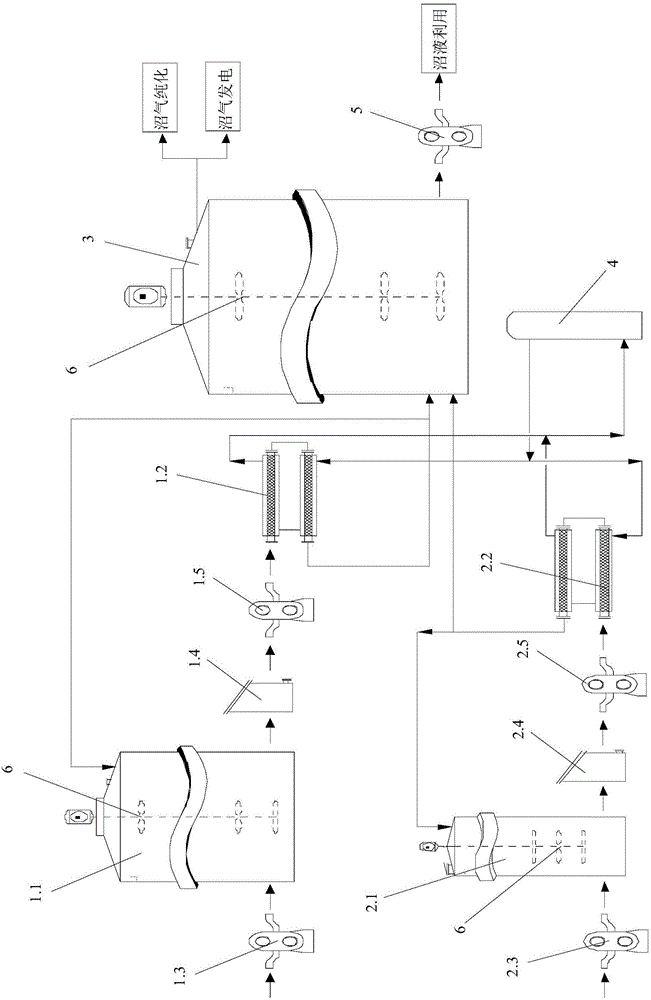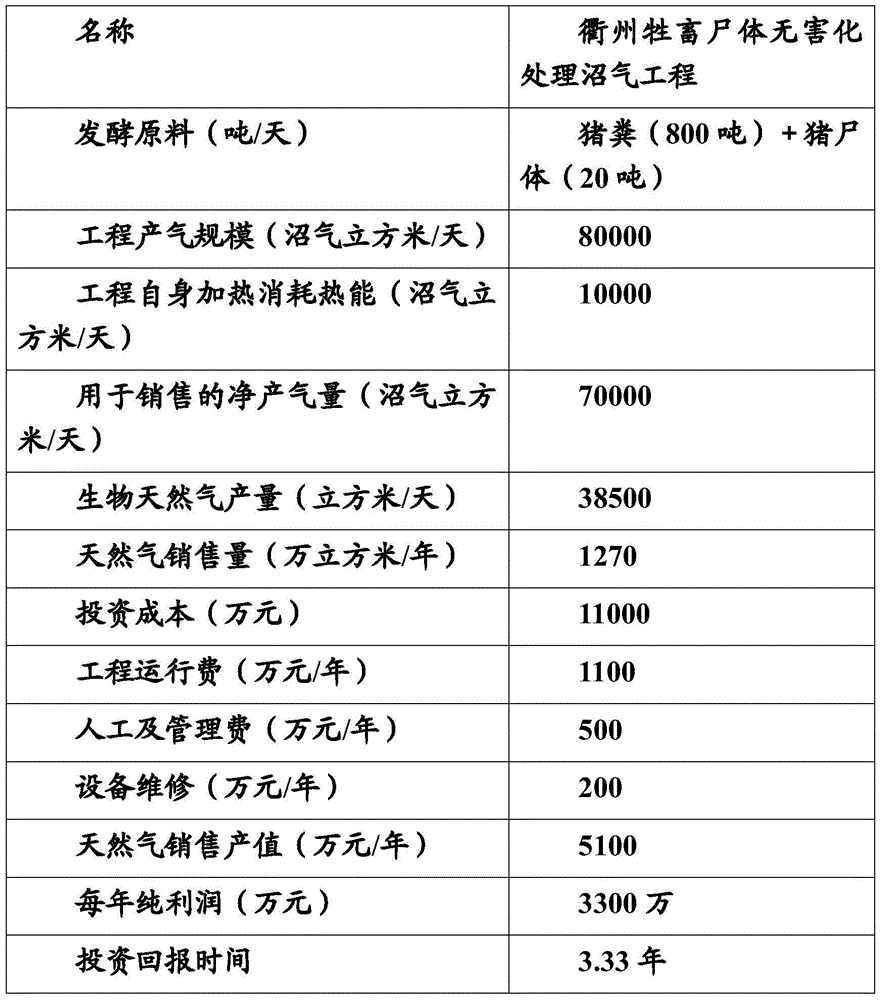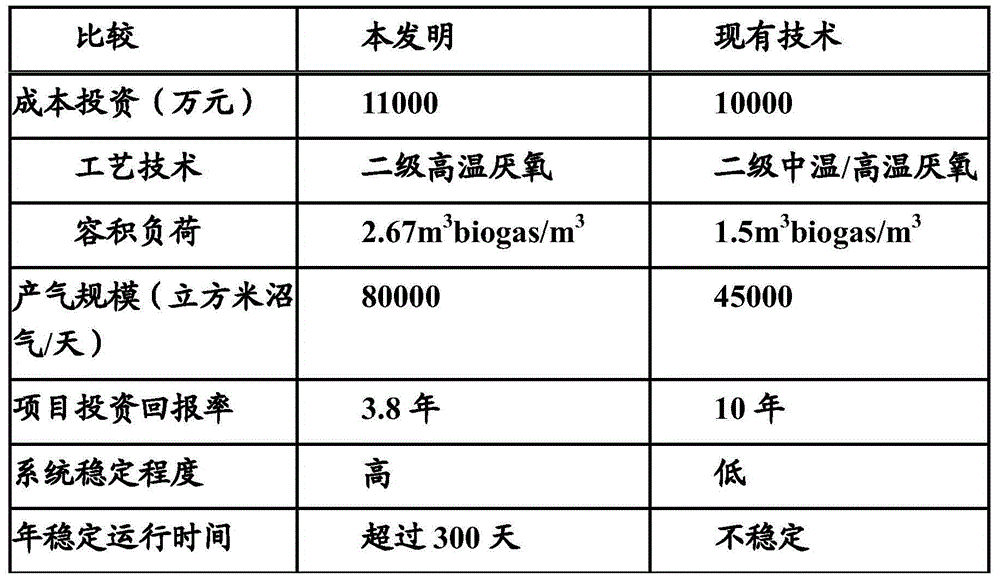Device for effectively preparing biogas through secondary high-temperature anaerobic fermentation of composite material and method thereof
A technology of two-stage anaerobic fermentation and high-temperature anaerobic fermentation, applied in biochemical equipment and methods, fermentation, waste fuel, etc., can solve the problems of unstable acidification operation, poor processing capacity and high maintenance cost, and achieve long-term operation of the device. The effect of stability, strong tolerance and high gas production load
- Summary
- Abstract
- Description
- Claims
- Application Information
AI Technical Summary
Problems solved by technology
Method used
Image
Examples
Embodiment 1
[0071] The present invention also provides a method for preparing biogas by anaerobic fermentation, comprising the following steps:
[0072] see figure 1 , (1) The materials are divided into two categories, and the materials are divided into two categories according to whether they are fermented waste:
[0073] The first type of material is fermented waste; it is cow manure + pig manure. Since this material has undergone anaerobic digestion, the material has a strong buffering ability against acid and alkali and is easy to be hydrolyzed again.
[0074] The second type of material is the product that has not been anaerobically fermented; specifically, it is food waste;
[0075] (2) Pretreat the classified materials separately:
[0076] The first type of material is transported by tanker to the material storage tank, and the sand, stones, wood blocks, plastics, etc. in the material are removed by pretreatment equipment such as grilles, crushers, and grit chambers. The equipmen...
Embodiment 2
[0092] Basically the same as Example 1, the difference is: the first type of material is cow dung+chicken manure, and the second type of material is livestock carcasses and slaughter waste, which stays in the first-level anaerobic fermentation tank for 4 days. Stay in the second-level anaerobic fermentation tank for 8 days.
[0093] The scheduled time for the first type of material to enter the secondary anaerobic fermentation tank is 15 minutes, and the scheduled reflux time is 15 minutes; the scheduled time for the second type of material to be fed into the secondary anaerobic fermentation tank is 45 minutes, and the scheduled reflux time is 45 minutes. minute;
[0094] The temperature in the secondary anaerobic fermentation tank is 52°C, the hydraulic retention time is 18 days, and the daily temperature change of the secondary anaerobic fermentation tank is less than 1°C.
Embodiment 3
[0096] It is basically the same as Example 1, except that the first type of material is pig manure, and the second type of material is municipal sludge. Stay in the first-level anaerobic fermentation tank for 2 days, and stay in the second-level anaerobic fermentation tank for 10 days.
[0097] The scheduled time for the first type of material to enter the secondary anaerobic fermentation tank is 20 minutes, and the scheduled reflux time is 20 minutes; the scheduled time for the second type of material to be fed into the secondary anaerobic fermentation tank is 45 minutes, and the scheduled reflux time is 45 minutes. minute;
[0098] The temperature in the secondary anaerobic fermentation tank is 52°C, the hydraulic retention time is 20 days, and the daily temperature change in the secondary anaerobic fermentation tank is controlled within plus or minus 1°C.
[0099] The effect of the present invention is illustrated below through a specific embodiment:
[0100] To realize t...
PUM
 Login to View More
Login to View More Abstract
Description
Claims
Application Information
 Login to View More
Login to View More - R&D
- Intellectual Property
- Life Sciences
- Materials
- Tech Scout
- Unparalleled Data Quality
- Higher Quality Content
- 60% Fewer Hallucinations
Browse by: Latest US Patents, China's latest patents, Technical Efficacy Thesaurus, Application Domain, Technology Topic, Popular Technical Reports.
© 2025 PatSnap. All rights reserved.Legal|Privacy policy|Modern Slavery Act Transparency Statement|Sitemap|About US| Contact US: help@patsnap.com



